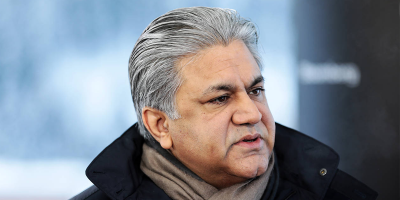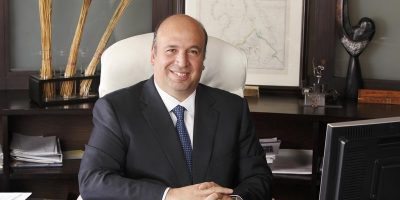It was brought to our attention by a Twitter follower that Air Arabia – a company in which Abraaj invested in December 2007 – had loaned over $100mn to Abraaj. This was also mentioned by an FT article from May 31st 2018.
But first, Abraaj’s description of Air Arabia.
Launched in October 2003, Air Arabia was the first and is the largest low cost carrier in the Middle East and North Africa. The company started operating with a fleet of two aircraft flying to five destinations. It has since grown to 44 Airbus A320s serving over 101 destinations in the Middle East, North Africa, Asia and Europe, from five hubs. It has won recognition for its achievements with various prestigious industry awards. The company went public in 2007.
It’s no secret that the airline industry, particularly the low-cost segment, is notoriously competitive.
Success typically requires extremely efficient flight and ground operations but also highly optimized financial management.
Why a low-cost airline carrier would lend its precious balance sheet to an illiquid Emerging Market Private Equity group is anyone’s guess.
Air Arabia
Air Arabia is publicly listed on the DFM. It has around 4.7bn shares outstanding and they currently trade at around AED 1.13 giving it a market capitalization of around AED 5.3bn.
In terms of shareholders, Sharjah’s young sovereign wealth fund, Sharjah Asset Management is the largest, with an 18% stake.
We decided to review recent financial statements and annual reports to see exactly when this loan to Abraaj began, how large it was and on what terms was it issued.
The Loan
An “investment” in a related party first shows up towards the end of 2014. In the 2014 Financial Statement (FS), Note 16 Related Party Transactions states:
The Group also invests cash balances with a related party in order to seek to maximise returns. The unquoted investments disclosed in note 12 (and the other short term investments disclosed in note 17.1) represent such balances.
Jumping to Note 17.1 Other Investments we read “Short-term investments” of AED 183,654,000.
A footnote associated with this states:
Represents investment placed in an investment company. This investment carries interest at 10% per annum.
At the time, Air Arabia’s bank balances and cash earned interest rates betwen 3% and 5% per annum.
This “investment” in an investment company earned more than double. It’s clear to see why Air Arabia made this bet, they were lured naively by a relatively high yield.
Finance 101: high yield = relatively high risk
The 2015 FS also shows the same “investment”, continuing to yield 10%. So far so good.
In the 2016 FS we see this balance jump 2.5X to AED 459,129,000. Evidently Air Arabia has more cash at hand than they know what to do with. As an airline, we’d suggest three basic options.
- Pay down debt
- Return it to shareholders
- Park it in a fixed deposit
In the 2017 FS, the “investment” in the investment company is elaborated on.
Represents investment placed in an investment company (refer to note 13) for the period of three months. This investment carried interest ranging from at 10% to 10.25% per annum (2016: 8.5% to 10% per annum).
Fast forward one quarter, and Abraaj Holdings defaults on its dues. In a matter of weeks Abraaj then decides there is no way out but to put itself into a court-managed liquidation. Game over.
Conclusion
If we were Air Arabia shareholders we’d be very concerned with the firm’s current governance culture, let alone the prudence of its investment decisions.
Abraaj was a minority shareholder in Air Arabia and Arif Naqvi was a director on Air Arabia’s board. This presented huge scope for conflict of interest, particularly when conducting related party lending of this size.
A large, cash generative business like Air Arabia seems to have been easy pickings for Naqvi to charm, bully or otherwise convince a weak board and management to lend him their surplus cash.
Air Arabia is in the airline business. If it had surplus cash then why didn’t it choose one the options mentioned earlier in this article?
Pay down debts. Distribute it back to shareholders via a dividend, or at least, if they wanted to hold onto it, then add it to their existing fixed deposits. Air Arabia is not in the financial investment business.
In deciding to lend this substantial amount to Abraaj, we wonder…
Did Air Arabia have access to Abraaj’s audited financial statements?
Did Air Arabia put together an investment memo complete with due diligence showing the clear case for investing with Abraaj?
Were opportunities with other investment companies also evaluated? If so, where is that comparative evidence?
Was the risk assessment of Abraaj prudent or was there negligence?
Who signed off on this “investment”?
These are questions shareholders should demand answers to.
We looked at Air Arabia’s 2017 Annual Report and made the following observations:
- What a coincidence, they also use Abraaj’s auditor, KPMG.
- Whilst Air Arabia has an Audit Committee, Nominations & Remuneration Committee and an Internal Trading Supervision Committee, it lacks an Investment Committee.
- The 2017 AGM approved a board remuneration of AED 3.85mn for the year 2016. For 2017, the board of directors recommended AED 5.875mn, no doubt in return for their outstanding corporate stewardship and investment acumen.
We leave you with the following thought.
Those at Air Arabia responsible for assessing Abraaj Group risk appear to have failed their shareholders. Furthermore, shareholders, particularly minority ones, should demand an investigation into the paper-trail that led to this disastrous decision and hold those accountable fully responsible.
(h/t @realreturns1 for flagging this to us)





Mohammad Salman
I did not that much research as the author did. As soon as the news of Air Arabia came i knew Naqvi was an Independent Director in the BOD.
KPMG is in trouble everywhere